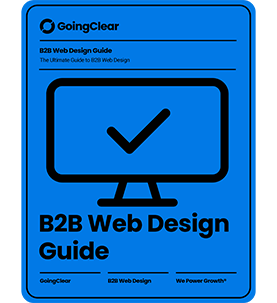5 Web Design Trends to Watch in 2019

Do you know how long 50 milliseconds is? Fifty milliseconds is the equivalent of 0.05 seconds. Why is that number important? It’s meaningful because that’s how long a website has to make an impression on a visitor.
Just like a website has to make an impression quickly to get someone to stick around, website design trends change fast. A typical New Year ushers in some new web design trends, some of which have staying power and others that fade away relatively fast.
If you’re a web developer or designer, it’s vital for you to stay on top of the latest design trends. If you don’t you run the risk of creating websites that appear out of touch or that lack the functionality that’s necessary to provide a satisfying user experience.
1. Speed
Web designers and developers used to focus on making web pages load faster because users tend to navigate away from websites that take three seconds or longer to load. While losing visitors should be enough motivation to improve a website’s load time, there’s now another pressing reason for you to do everything possible for your website to load faster.
What’s the other reason that will cause web designers to focus on speed in 2019? Google’s Page Speed Update. In July, 2018, Google updated its algorithm so that sites that load faster rank better than their slower-loading competitors. If you want to retain or improve where your site lands in Google’s search engine results pages, you need to improve your website’s load time so that your site loads in two seconds or less.
2. Flat Design
With page load speed being so important these days, flat or minimalist web designs will continue to be a leading trend in 2019. Flat designs are known for loading much faster than sites that are burdened with high resolution images that are slow to load. This type of design is also celebrated for meeting a lot of the speed requirements that Google and other search engines have for websites to rank well in SERPs as a function of their very nature, which can help improve your search engine optimization.
Given their name, many people mistakenly believe flat designs are boring and lacking in visual appeal. This misconception couldn’t be farther from the truth in most instances. While minimalist sites do go without the clutter found on slower sites, they still typically have bright, contrasting colors, cool fonts and eye-catching imagery that’s often compressed to load faster.
Flat web designs are known for one more thing. They’re widely recognized for being able to retain the interest of visitors longer. What might that mean for your website? A greater number of conversions, of course!
3. Mobile-First Website Design
The effects of Google’s transition to a mobile-first world in 2018 will continue to make an impact into the new year. This shift is critical because it means that Google will prioritize mobile websites over desktop sites in its search results moving forward. This doesn’t mean that Google will not include desktop websites in the search results it produces, but it does mean the search giant will favor mobile friendly sites in SERPs.
Given Google’s shift to mobile-first, a top design trend in 2019 and the years that will follow in the foreseeable future will be to create websites for mobile users before making a version that will work for desktop users. This trend won’t be driven by ranking factors and SEO alone. The trend will have staying power because it’s necessary to satisfy the demands of mobile users who continue to consume more Internet time than their desktop brethren.
4. Asymmetrical Web Designs
Grids or symmetrical layouts have been used for years for a wide variety of things, such as web pages and print newspapers. Historically, a grid has enabled web designers to keep the pages they design in alignment and symmetrical.
While that’s the case, an increasing number of web designers are using asymmetrical or broken grid formats to make their sites stand out from the pack, a trend that will be popular in 2019. Rather than looking sloppy and disorganized like the broken grid websites of the past, today’s asymmetrical websites provide a sense of depth thanks to designers incorporating irregular patterns, layers, a generous amount of white space and other elements into their designs.
Many designers will use a visual hierarchy of sorts when they’re creating an asymmetrical website. By doing to, they’re able to successfully direct visitors to the webpages, information, and calls to action they want users to see.
5. Geometric Shapes
Do you remember being told that Euclid is the father of geometry? If so, you may recall wondering when you’d ever use geometry as a kid. Now is the time for web designs everywhere to give a nod to Euclid because using geometric shapes will be a big trend in 2019.
Geometric shapes will be widely used because they work in both grid-based and asymmetrical website designs. These shapes can be used to create the irregular patterns that are often included in a broken grid design, which can give the illusion of depth and vitality. In flat designs, geometric shapes can be employed to establish organization because they typically fit next to each other neatly.
The key to using geometric shapes effectively is to choose the ones you want to use carefully. Like colors, shapes can evoke some powerful emotions in viewers. Stability is often associated with rectangles while circles and a sense of unity usually go hand-in-hand. Make sure the shapes you use convey the emotions you want people to have when they visit your website.
Let Us Put 2019’s Trends to Work for You
If you want to capitalize on the design trends that will dominate in 2019, you simply have to put our B2B web design company to work for you. We have the proven skills and experience to create and redesign websites that incorporate all the latest trends for businesses across industries.
To learn how we can help your website get the most out of 2019’s design trends, contact GoingClear now.

